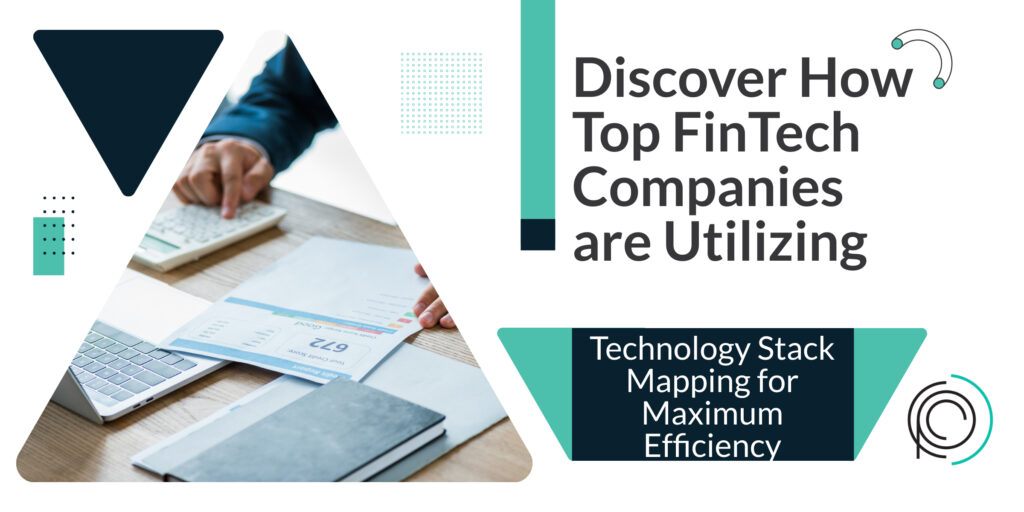Unlocking Success: The Power of Technology Stack Mapping in FinTech
In the rapidly evolving space of FinTech, technology plays a crucial role in helping businesses achieve their goals and objectives. Every organization in the FinTech industry relies heavily on a technology stack – a collection of various software applications, databases, hardware, and programming languages. This technology stack forms the backbone of their operations and allows them to provide financial services efficiently and effectively.
However, the concept of a technology stack is not static; it constantly evolves and changes over time. As FinTech businesses grow and adapt to new challenges and opportunities, they often add new applications or tools to their technology stack. While these additions can bring numerous benefits, they also present a challenge – how to effectively monitor and assess the performance and usage of these new technologies.
This is where technology stack mapping becomes essential. Technology stack mapping involves the process of thoroughly understanding and documenting the various components of an organization’s technology stack. By mapping out the entire stack, businesses gain a comprehensive view of the different software and hardware being used, their interdependencies, and how they contribute to achieving business objectives.
The importance of technology stack mapping becomes especially evident when it comes to accurate metrics and data analysis. By mapping the technology stack, businesses can capture crucial data points related to the performance, usage, and integration of each software application or tool. This data can then be used to generate accurate metrics and valuable insights, allowing businesses to make informed decisions and optimize their operations.
Furthermore, integrating the technology stack is essential for ensuring the seamless flow of data and information within an organization. When different software applications and tools are not properly integrated, it can lead to data silos and inefficiencies. Integration enables the smooth transfer and sharing of data across different components of the technology stack, enabling seamless collaboration between different teams and departments.
Technology stack mapping is a critical practice for FinTech businesses to keep track of the ever-evolving components of their technology infrastructure. By thoroughly understanding and documenting their technology stack, businesses can capture accurate metrics, gain valuable insights, and ensure efficient data integration. With the right technology stack mapping strategies in place, FinTech organizations can stay at the forefront of innovation and deliver exceptional financial services to their customers. Now we will discuss the importance of technology stack mapping for accurate metrics and why integrating the technology stack is essential for your data.
1. Understanding Technology Stack Mapping:
Technology stack mapping is the process of identifying and mapping all the different components of a business’s technology stack. This includes software applications, programming languages, hardware, and databases that are used within the business. The purpose of technology stack mapping is to create a clear picture of the technology stack and understand its functionalities, interdependencies, and performance.
During the technology stack mapping process, businesses can track the performance of their technology stack and identify areas that may need improvement. By understanding the interdependencies between different components, businesses can identify potential bottlenecks or issues that may be affecting the overall performance of their technology stack.
Technology stack mapping is beneficial for businesses as it allows them to have a comprehensive overview of their technology infrastructure. It helps businesses make informed decisions, such as upgrading or replacing certain components of the technology stack, optimizing performance, or integrating new tools or applications.
Overall, technology stack mapping is a crucial process that enables businesses to have a clear understanding of their technology stack, its functionalities, and performance, which ultimately helps in improving efficiency and making informed decisions regarding the technology infrastructure of the business.
2. The Importance of Technology Stack Mapping:
Technology stack mapping is a crucial aspect for any organization when it comes to obtaining accurate metrics. These metrics play a vital role in enabling businesses to track their performance efficiently and make well-informed decisions. By implementing a well-mapped technology stack, organizations can ensure that they are collecting data comprehensively and accurately. This data plays a crucial role in allowing them to gain a comprehensive understanding of the performance of their technology stack as a whole, identifying areas that require improvement, and effectively addressing any issues or bottlenecks. Without the practice of technology stack mapping, businesses would be left with fragmented and disconnected information, which would ultimately result in incorrect metrics and hinder their ability to make informed decisions. Therefore, it becomes imperative for organizations to prioritize and implement technology stack mapping to ensure accurate and reliable metrics that can drive their success.
3. Integrating the Technology Stack:
To achieve accurate metrics and ensure the smooth functioning of a business, it is crucial to integrate the technology stack. By integrating the various applications and tools used within an organization, they can seamlessly work together to enhance productivity and efficiency. The integration process involves connecting different software systems and establishing a seamless flow of data between them. This allows businesses to have real-time access to data, enabling them to make informed decisions without any delays. Moreover, integration ensures that data is captured directly from the source, reducing the chances of errors, loss, or duplication. By eliminating the need for manual data entry, businesses can save valuable time and resources, allowing their employees to focus on more critical tasks. In essence, integrating the technology stack is essential for businesses to streamline their data-gathering processes and optimize their overall operations.
4. The Benefits of Integrating Your Technology Stack:
Integrating your technology stack offers a multitude of advantages for businesses. One of the key benefits is the ability to streamline workflows and eliminate the need for manual data entry, which in turn reduces the potential for errors. By automating processes and connecting different systems, businesses can ensure that data is accurately transferred without the risk of duplication or loss.
Furthermore, integration enables businesses to have real-time access to data. This is important as it allows organizations to make informed decisions based on the most up-to-date information available. Whether it’s sales figures, customer data, or inventory levels, having real-time data at your fingertips empowers businesses to respond quickly to market changes and seize opportunities as they arise.
Moreover, integration simplifies the management of various systems, reducing the need for multiple personnel. Consolidating different systems into one cohesive unit not only saves time but also improves productivity. With a central platform to manage all operations, businesses can streamline their processes, collaborate more effectively, and avoid the inefficiencies that can arise from managing multiple disconnected systems.
In addition to increased productivity, integration also leads to reduced costs. By minimizing the need for additional personnel to handle individual systems, businesses can optimize their manpower and allocate resources more efficiently. This not only saves on labor costs but also reduces the likelihood of errors or delays that can result from manual interventions.
Overall, integrating your technology stack is a smart business move that brings numerous benefits. From streamlining workflows and enhancing data accuracy to enabling real-time insights and reducing costs, integration empowers businesses to operate more efficiently and stay competitive in today’s fast-paced digital landscape.
5. The Future of Technology Stack Mapping:
As technology continues to evolve at a rapid pace, businesses are constantly incorporating new applications and tools into their existing technology stack. In order to effectively manage and optimize their technological infrastructure, organizations must prioritize staying on top of technology stack mapping. This involves carefully identifying and organizing the various components of the technology stack, ensuring that they work cohesively and efficiently together.
Looking toward the future, it will become increasingly important for businesses to create a technology stack that is scalable, adaptable, and easily integrable. This means designing a stack that can easily grow and evolve with the needs of the organization, while also seamlessly integrating with other systems and applications. By doing so, companies can ensure that they are well-equipped to handle the ever-changing technological landscape and stay ahead of the competition.
In order to streamline the process of mapping and maintaining their technology stack, companies will need to embrace automation. Automation can significantly reduce the time and cost associated with managing and updating the technology stack. By automating tasks such as monitoring, configuration, and maintenance, organizations can free up resources to focus on more strategic and high-value initiatives.
Furthermore, businesses cannot afford to overlook the importance of data privacy and security when integrating their technology stack. As more and more data is generated and processed within the technological ecosystem, organizations must prioritize protecting the confidentiality, integrity, and availability of their data. This involves implementing robust security measures, such as encryption, user access controls, and regular audits, to mitigate the risk of data breaches and cyber-attacks.
Effectively managing and optimizing a technology stack is crucial for businesses in today’s rapidly advancing digital landscape. By prioritizing scalability, adaptability, automation, and data privacy, organizations can ensure that their technology stack is not only efficient and effective but also secure and resilient in the face of increasing technological complexities.
Accurate metrics are vital for businesses to make informed decisions. To achieve accurate metrics, businesses need a well-mapped technology stack that is integrated. Technology stack mapping provides businesses with a clear picture of their technology stack, enabling them to track its performance. Integrating the technology stack helps to streamline workflows, enhance data accuracy, and view data in real-time, leading to improved productivity and reduced costs. That said, businesses must stay on top of technology stack mapping, and prioritize data privacy and security to ensure that their technology stack is scalable, adaptable, and easily integrable. If you would like to discuss how technology stack mapping can help your organization button up operations, book a no-obligation consultation with one of our experts today.






